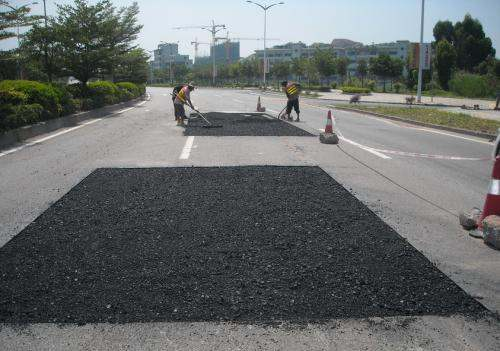
PRODUCTS SHOW
Asphalt Distributor Truck
Trailer Type Asphalt Distributor
Bitumen Sprayer
Rubber Asphalt Distributor Truck
Synchronous Chip Sealer
6m3 Micro-surfacing Paver
10m3 Micro-surfacing Paver
11m3 Micro-surfacing Paver
12m3 Micro-surfacing Paver
Pull-Type Chip Spreader
Automatic Chip Spreader
News
Concrete pavement cracks are divided into several types? What are the preventive measures?

February 15th, 2022
Generally speaking, asphalt concrete pavement cracks can be divided into two types: one is load type cracks, which are mainly caused by driving load. Under the action of vehicle load, tensile stress is generated at the bottom of semi-rigid base course. If the tensile stress is greater than the tensile strength of base course material, the bottom of base course will crack quickly until the asphalt surface is affected.
(1) Reasonably organize construction. The paving operation shall be as continuous as possible and cold joints shall be avoided as far as possible. If it cannot be avoided, the edge of the compacted paving belt shall be cut neatly according to the requirements, the floating material shall be removed, the new hot mixture shall be applied to the joint to preheat and soften the cold material part, the application material shall be removed, the adhesive layer asphalt of 0.3 ~ 0.6kg/m shall be applied to the joint wall, and then the new asphalt mixture shall be paved.
(2) Fully compact transverse joints. During rolling, the roller shall first extend the steel wheel into the new paving part for about 15cm on the road width with compacted transverse joints, and then move 15 ~ 20cm to the new paving layer every time until the roller completely enters the new paving layer, and then turn to longitudinal rolling.
(3) The cement used for semi-rigid base course should be produced in rotary kiln with stable quality. The cement dosage should meet the design and construction requirements, and the cement and other mixtures should be fully mixed to make it uniform. Road cement shall be tested and tested by relevant departments according to the required frequency.
(4) Gravel and other materials with good water permeability and material quality shall be selected for the backfilling parts of bridges and culverts, and shall be filled and fully rolled as required; For sections with serious settlement, soft soil foundation treatment shall be carried out first, and the construction shall be reasonably organized to reduce the uneven settlement of backfilling parts.
The other is non load crack, which mainly includes low temperature shrinkage crack and temperature fatigue crack; Cracks caused by improper construction technology or the use of unqualified materials. The two types of cracks are shown in the forms of transverse cracks, longitudinal cracks, mesh cracks and reflection cracks respectively.

(1) Reasonably organize construction. The paving operation shall be as continuous as possible and cold joints shall be avoided as far as possible. If it cannot be avoided, the edge of the compacted paving belt shall be cut neatly according to the requirements, the floating material shall be removed, the new hot mixture shall be applied to the joint to preheat and soften the cold material part, the application material shall be removed, the adhesive layer asphalt of 0.3 ~ 0.6kg/m shall be applied to the joint wall, and then the new asphalt mixture shall be paved.
(2) Fully compact transverse joints. During rolling, the roller shall first extend the steel wheel into the new paving part for about 15cm on the road width with compacted transverse joints, and then move 15 ~ 20cm to the new paving layer every time until the roller completely enters the new paving layer, and then turn to longitudinal rolling.
(3) The cement used for semi-rigid base course should be produced in rotary kiln with stable quality. The cement dosage should meet the design and construction requirements, and the cement and other mixtures should be fully mixed to make it uniform. Road cement shall be tested and tested by relevant departments according to the required frequency.
(4) Gravel and other materials with good water permeability and material quality shall be selected for the backfilling parts of bridges and culverts, and shall be filled and fully rolled as required; For sections with serious settlement, soft soil foundation treatment shall be carried out first, and the construction shall be reasonably organized to reduce the uneven settlement of backfilling parts.
LINK
MANUFACTURER
Address : No. 1001 Longxiang Industrial Park, Weidu District,XuChang,HeNan, China
Tel : 4000-676-878
Code : 461000
Email : sales@sinoroader.com
Wechat : Sinosun
WhatsApp :+86 18224529750
Contact Us



